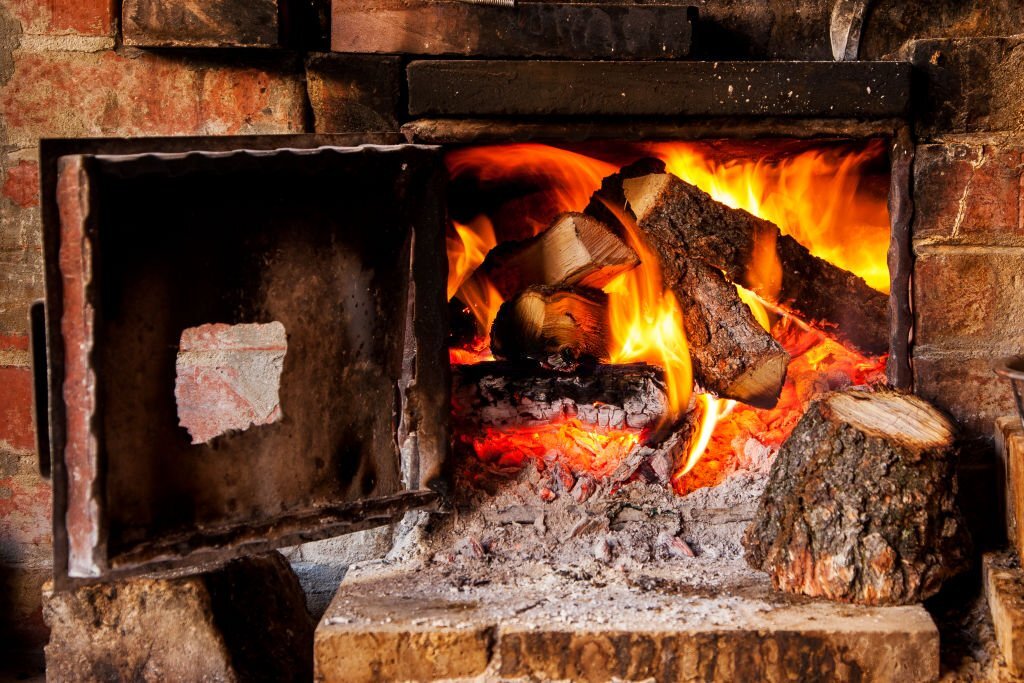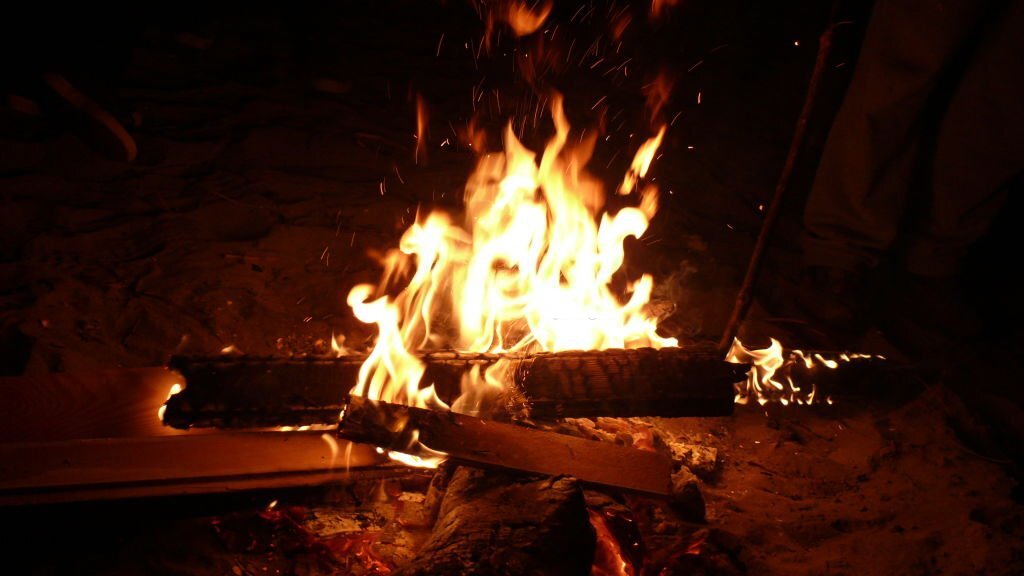Pine wood is a softwood that is distinguished by its light color, knots, and grain patterns. Because of the affordability, workability, and natural beauty of pine wood, it is often used in building, furniture manufacturing, and DIY crafts.
While it is not as durable as hardwoods, it is nonetheless popular due to its adaptability and environmental friendliness.
This kind of wood is frequently associated with camping since it is widely used for campfires, where it provides warmth and a nice scent. Because of its ease of igniting, it is used as kindling and as a fire starter.
Pine wood is also utilized in the construction of temporary shelters, furnishings, and camping equipment such as tent poles.
Furthermore, camping in pine woods provides a wonderful natural backdrop that enhances the whole camping experience through its visual appeal and connection to nature.
A bonfire is an essential component for a pleasant outdoor experience when camping. Warmth, light, and a focal point for socializing and cooking are all provided by a campfire.
Choosing the correct firewood is critical since it has a large influence on the quality and efficiency of the campfire. Because of its availability, simplicity of lighting, and pleasant scent when burnt, pine wood is a popular option for campfires.
However, there are benefits and drawbacks to utilizing pine wood as camping fuel. In this post, we will look at the qualities of pine wood, its appropriateness for campfires, and some crucial factors to consider.

Pinewood and Camping Bonfire
Pine wood is a form of softwood obtained from numerous species of the Pinus genus. It has a distinguishing look due to its light hue, knots, and peculiar grain patterns.
Softwoods, like pine, are less thick than hardwoods, which means they ignite more easily and burn more quickly. Because of this, pine wood is a good choice for kindling and rapidly starting a fire.
When camping, where convenience is typically a necessity, pine wood is an appealing alternative due to its simplicity of ignition.
Another benefit of utilizing pine wood for campfires is the lovely scent that it generates when burned.
The pleasant fragrance of pine enhances the camping experience by providing a comfortable and soothing ambiance around the campfire.
This fragrance characteristic is especially appealing to individuals who appreciate the outdoors and wish to immerse themselves completely in nature during their vacation.
Pinewood: Choose carefully
Despite its benefits, there are several crucial factors to consider when utilizing pine wood as fuel for camping. One important disadvantage of pine wood is that it contains more resin or sap than other forms of fuel.
The resin can create excessive popping and crackling during combustion, resulting in sparks and embers shooting out of the fire, creating a safety concern for campers and the surrounding environment.
To avoid this problem, stay a safe distance from the fire and avoid sitting too near, especially if pine wood is used as the major fuel.
Furthermore, if you use a camping stove with a chimney, the high resin content of pine wood might cause increased soot and creosote accumulation in the chimney or flue.
This accumulation has the potential to produce chimney fires, which are dangerous and can damage camping equipment. To prevent excessive creosote formation, the chimney must be cleaned on a regular basis and the fire must be monitored.
Also, while pine wood easily ignites, it burns quickly and may not generate long-lasting coals when compared to hardwoods such as oak or hickory.
Long-lasting coals are ideal for cooking meals over a campfire because they provide a continuous and stable heat source.
On average, dry pinewood has a BTU content of approximately 24 to 28 million BTUs per cord. However, this value can be different for different species of pine and their specific characteristics
If cooking is an important element of your camping experience, replacing pine wood with hardwoods may be advantageous for a more continuous and manageable cooking fire.
Pinewood can offer adequate heat for tiny camping sites or during mild weather conditions.
However, for chilly nights or bigger gatherings, burning pine wood alone may not be enough to provide the necessary warmth. In such instances, it is best to combine pine wood with hardwoods or other higher-density woods.
The influence on the surrounding ecosystem is another ecological issue when utilizing pine wood for campfires.
To minimize the spread of pests and illnesses to the forest, certain camping places may prohibit the use of local firewood.
Preventions
Transporting and utilizing pine wood as firewood might be damaging to the local ecology if it is not native to the camping area.
To safeguard the environment, campers should always follow local legislation and standards regarding firewood collecting and consumption.
Because of its ease of ignition and nice scent when burned, pine wood might be a good choice for camping firewood.
The reduced density and high resin content of the wood makes it easier to build a fire, which is beneficial for campers looking for simplicity and efficiency.
The delicious fragrance of burning pine adds to the camping experience, providing a relaxing atmosphere around the campfire.
However, campers should be aware of potential downsides, such as the chance of popping, crackling, and sparking caused by the resin component, which can be dangerous.
Furthermore, because of the high resin content, soot and creosote accumulation in the chimney or flue may occur, needing regular cleaning to prevent chimney fires. The comparatively quick burn rate of pine wood may not create long-lasting coals.
As a result, combining it with hardwoods may create a more consistent and regulated heat source, which is crucial for cooking and providing warmth during cooler evenings or for bigger camping parties.
Furthermore, environmental issues are critical, and campers must follow local restrictions to maintain the ecology.
Responsible firewood practices, such as utilizing locally produced wood and adhering to campfire guidelines, will help to guarantee a safe and happy camping experience while using pine wood as fuel.
Also, watch this video here that shows you whether you should burn pinewood or not.
Conclusion
Finally, because of its ease of ignition, attractive scent, and availability on many camping sites, pine wood might be a suitable firewood alternative for camping.
It is very effective for fast kindling and starting fires, making it ideal for campers. Campers should be mindful of several possible downsides, including the high resin content, which can cause popping, crackling, and creosote accumulation.
Combining pine and hardwood woods can improve overall fire performance by generating more sustained heat and longer-lasting coals for cooking.
To guarantee a respectful and pleasurable camping experience, campers should consider safety, environmental effects, and local legislation before utilizing pine wood for campfires.
Editor’s Recommendation:

Hi, I’m Masab Jamal, the founder and head editor of this blog. I love to spend most of my time in the wilderness. Apart from camping and outdoor life, I’m a full time blogger.

